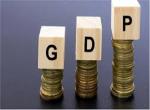India unveiled its new pan-India Consumer Price Index (CPI) in February 2012. With the release of the index figures for January, it is possible to compute annual inflation rates based on the new all-India CPI. The headline inflation rate based on this new measure stood at 7.7% but the core inflation rate, excluding food and fuel, was in double digits (10.3%). Food has a weight of around 50% in the index, fuel around 10% and services about 26%. The Reserve Bank of India (RBI) is unlikely to set monetary policy based on this new inflation measure in the near future, given that the data series is yet to be tested for consistency, etc. Nonetheless, the inflation rate is high enough to warrant tempering of rate cut expectations.
The RBI governor, in a recent speech, said that global central bankers increasingly face the trilemma of managing financial stability, price stability and fiscal sustainability. He should know. His attempts to bring the rate of inflation down in India have been enormously complicated by fiscal deficits and government borrowings. Further, in an interview to The Wall Street Journal, he pegged India’s potential growth rate at 7% only. Perhaps, he was aware of the numbers in the economic advisory council (EAC) report submitted to the Prime Minister in February. The gross domestic fixed capital formation in India is expected to have slipped below 30%. The private sector has pulled back from investing in the country. EAC still goes ahead and predicts a bounce-back in the gross domestic product (GDP) growth to 7.6% in 2012-13 from an expected growth outcome of 7.1% in 2011-12 (the government estimate is 6.9%). In fact, if EAC assumptions on growth and the dollar-rupee exchange rate hold good, then 2012-13 should witness India’s nominal GDP cross the $2 trillion mark.
That is ambitious and mostly unrealistic. It is predicated on the United Progressive Alliance (UPA) government climbing the tall fiscal hurdle EAC has set for it. That requires demonstrating incontestably that government finances are indeed on the path of fiscal consolidation (Page 14 of the EAC report). It is a tall order for a government that is still captive to populist instincts. The 3Fs—food, fuel and fertilizer subsidies—are devouring the country’s fiscal and economic future. EAC correctly notes that the half-hearted attempt at decontrolling the price of petrol while leaving diesel fuel pricing regime intact has introduced additional distortions. The partial reform in the fertilizer subsidy regime remains a non-starter unless urea prices are either decontrolled or raised substantially.
Indeed, analysts are unsure as to what outcome should they wish for the Congress party in the elections to five state assemblies for the government at the Centre to pursue fiscal consolidation. In fact, it is possible to argue that a good outcome for the Congress is bad for India’s medium-term fiscal path as a good outcome emboldens the chances of Rahul Gandhi making a bid to be the prime minister of India in the national elections in 2014. His fiscal instincts seem populist rather than prudent. If the Congress fares badly, it might shelve any attempt at fiscal consolidation out of fear of alienating voters further ahead of the 2014 elections. Hence, whichever way one slices the argument, India’s fiscal direction is far from being set on the path to improvement.
Writing about Bundelkhand in Uttar Pradesh (UP), Shekhar Gupta of The Indian Express notes that the place has everything except water and that its water scarcity had everything to do with the UPA government’s environmental activism: “And the one scheme that could have changed its face, the interlinking of Ken and Betwa, two rivers in the same Yamuna basin, became a casualty of the UPA’s early phase of environmental activism, in spite of the fact that the three riparian states, UP, Madhya Pradesh and Rajasthan had already signed an agreement on it.”
With the price of crude oil now rising globally and with fiscal consolidation not a done deal, India’s growth-inflation trade-off is not about to become favourable any time soon. India may have to live with a growth rate of 7% or below for quite some time to come. The Business Standard gets it right: there are solid reasons for us to lower growth expectations not only for 2012-13, but also for the next few years, at least.
Ironically, many commentators thoughtlessly refer to India’s 3.5% real growth rate in the first three decades after independence as the “Hindu rate of growth”. That is absurd. The policies fashioned by an avowedly atheistic Prime Minister who was as uninformed on Hinduism as he was on economics laid the foundation for India experiencing mediocre growth for a long period after independence. It was the Nehruvian rate of growth. Now, the Congress party is once again overseeing the derailment of the growth ambitions of a resurgent India in the new millennium. Mission accomplished.
Published in livemint.com ( The Wall Street Journal ) 27th February 2012









Post new comment